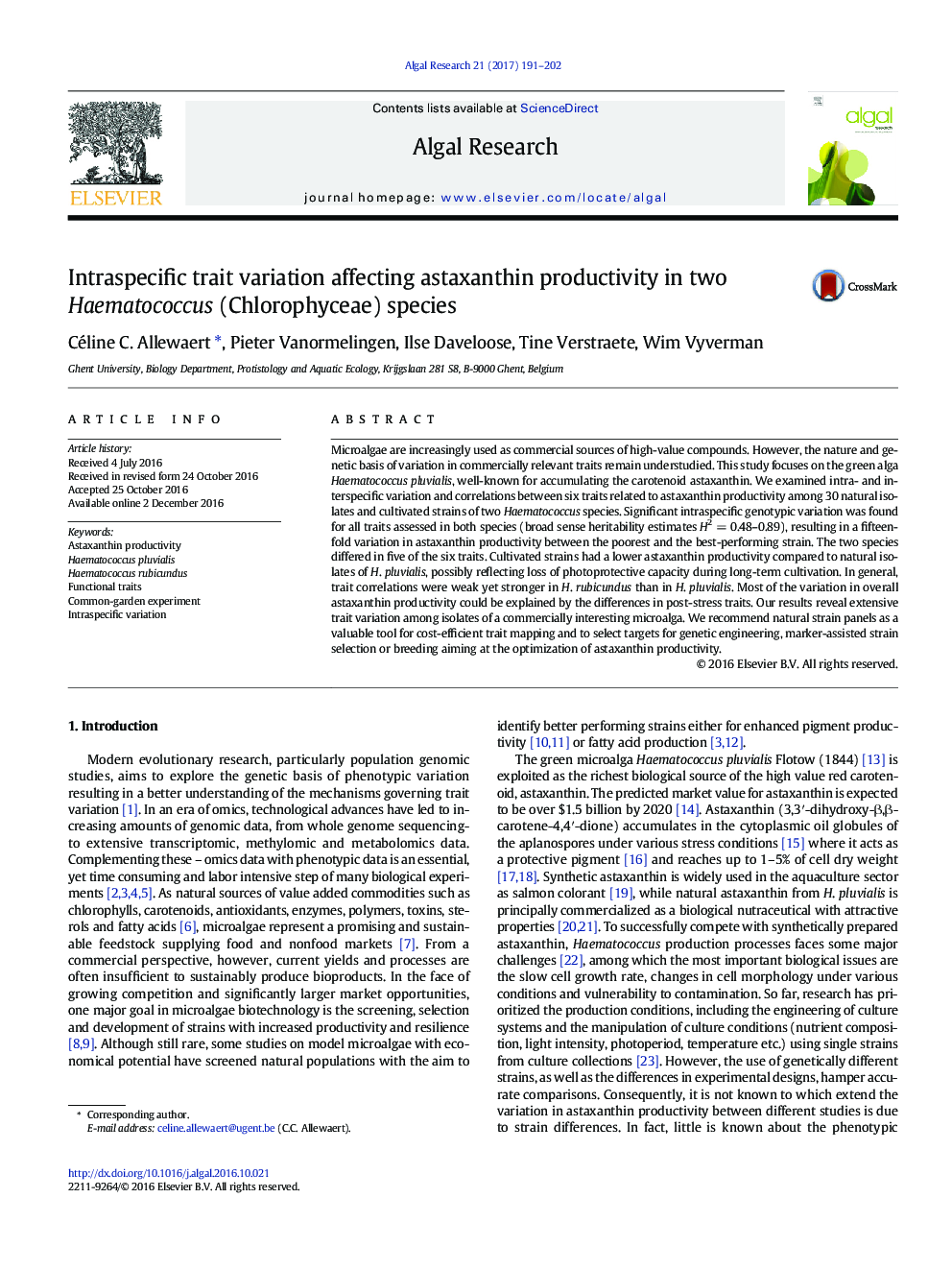| Article ID | Journal | Published Year | Pages | File Type |
|---|---|---|---|---|
| 5478502 | Algal Research | 2017 | 12 Pages |
Microalgae are increasingly used as commercial sources of high-value compounds. However, the nature and genetic basis of variation in commercially relevant traits remain understudied. This study focuses on the green alga Haematococcus pluvialis, well-known for accumulating the carotenoid astaxanthin. We examined intra- and interspecific variation and correlations between six traits related to astaxanthin productivity among 30 natural isolates and cultivated strains of two Haematococcus species. Significant intraspecific genotypic variation was found for all traits assessed in both species (broad sense heritability estimates H2Â =Â 0.48-0.89), resulting in a fifteen-fold variation in astaxanthin productivity between the poorest and the best-performing strain. The two species differed in five of the six traits. Cultivated strains had a lower astaxanthin productivity compared to natural isolates of H. pluvialis, possibly reflecting loss of photoprotective capacity during long-term cultivation. In general, trait correlations were weak yet stronger in H. rubicundus than in H. pluvialis. Most of the variation in overall astaxanthin productivity could be explained by the differences in post-stress traits. Our results reveal extensive trait variation among isolates of a commercially interesting microalga. We recommend natural strain panels as a valuable tool for cost-efficient trait mapping and to select targets for genetic engineering, marker-assisted strain selection or breeding aiming at the optimization of astaxanthin productivity.
